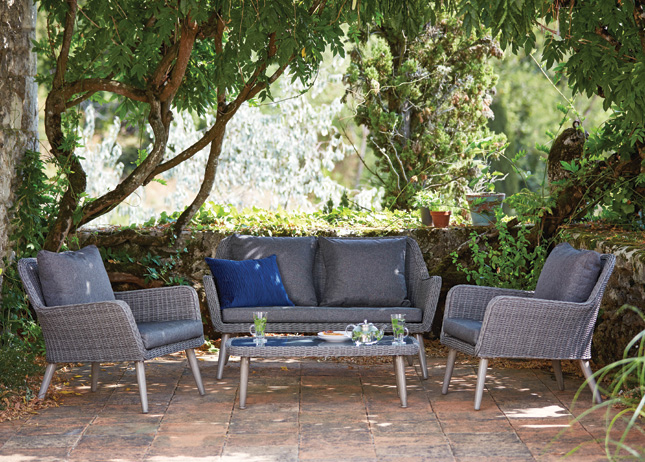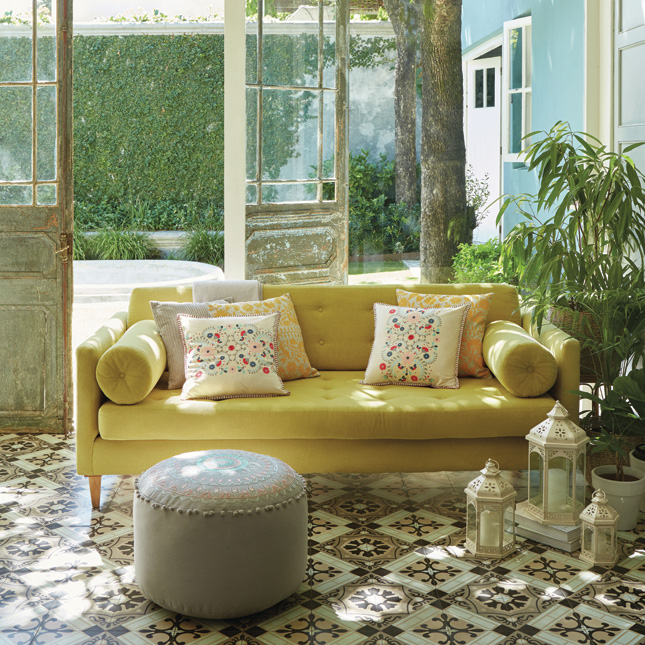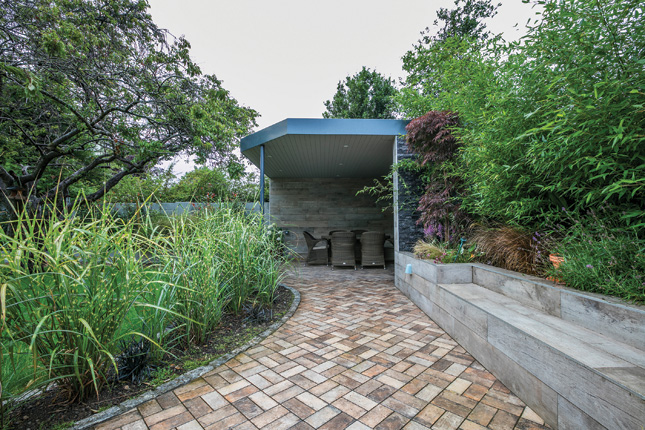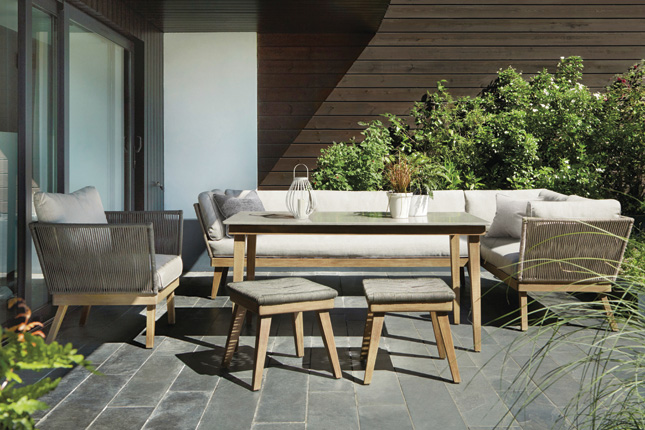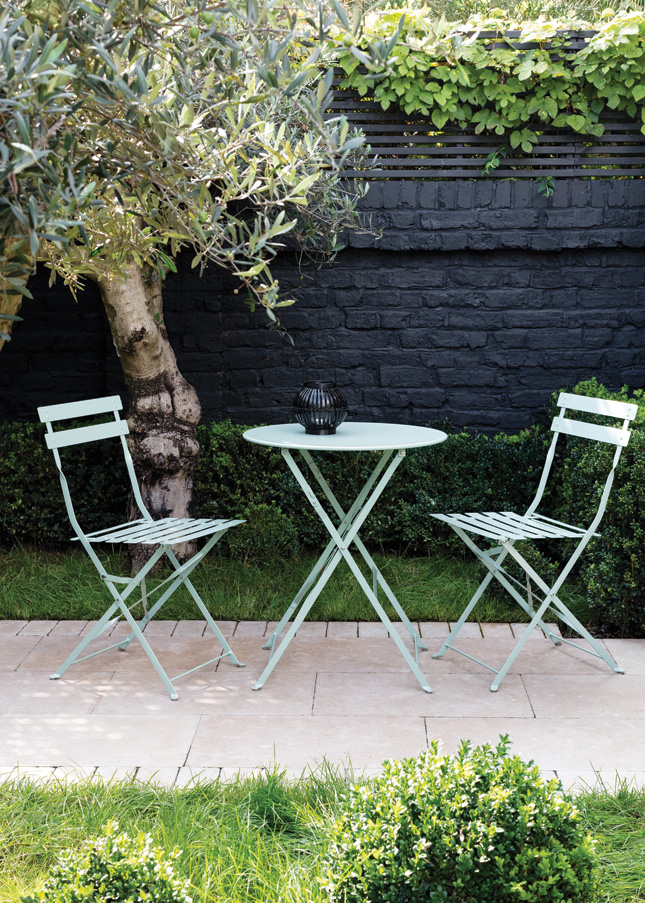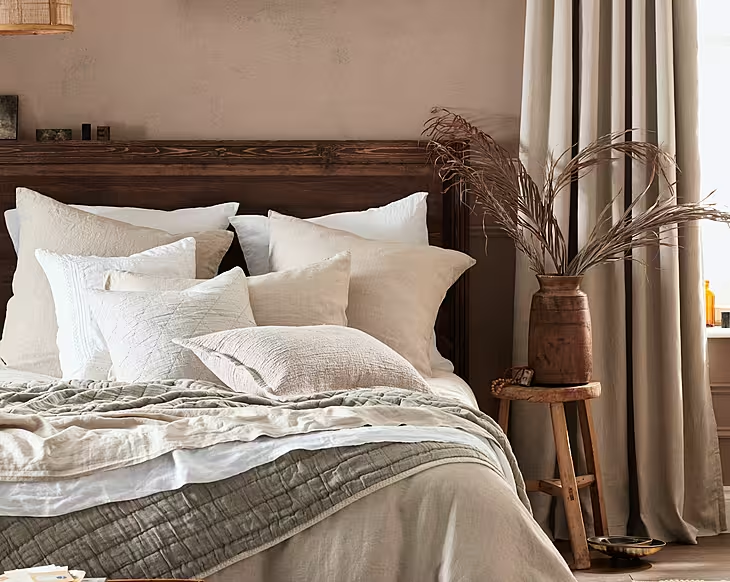Summer’s here, but you’ve still got time to get a grotty garden sorted. Our three-week guide on how to revamp your garden will help you get things gorgeous and make much better use of your space for warm, lazy days hopefully still to come
There’s a lot to consider when it comes to planning the perfect patio. Like orientation, the size and shape of the patio, paving materials, furniture, the right lighting and planting. You’ll also have to factor in access if your patio is not directly outside the rear door, drainage and even shade. After all, you don’t want to be blinded by sunlight all the time.
Sounds expensive? It can be, but it is achievable and it can be done in three weeks (by you!) with proper planning and preparation – providing you’ve the necessary skills and know-how. The key is to draw up your design on paper first that way you can see clearly if your ideas work or whether you need to adjust.
WEEK 1: PLANNING AND PREPARATION
Get the basics right and the rest will fall into place
Location: Orientation matters. Most patios are usually located adjacent to the house, but they don’t have to be. A patio located away from the house can make for a secluded retreat. If you plan to use your patio for dining al fresco, you’ll want it as close to the kitchen as possible. You’ll also have to factor in the sun and note where it sits in your garden at the time of day you’ll use it. “There’s no point putting a patio at the rear of your home if it sits in the shade for most of the day,” says garden designer Claire Hawker of Garden Design Dublin.
“There’s so much to consider when designing a patio space, we usually get our clients to sit down and fill out a questionnaire, which takes an hour to complete. It’s extremely detailed but it allows the client to think about their space properly and things they might never even have considered,” says Claire.
Size and shape: Do you want a small and intimate patio, a large space for family gatherings or perhaps an outdoor kitchen for entertaining? The patio should be in proportion to your house and the rest of the garden. If you like a big space a good guide is to make your patio the same floor area as your kitchen. Some want a patio to make the garden less work and so bigger seems better but beware of overdoing it. Too much hard landscaping can leave your garden looking clinical and bare.“If space permits, you could have two patios; a small one to enjoy a coffee in the morning sun and a larger one for dining in the afternoon and evening sun,” Claire says. Shape is also something to consider and it should enhance not just your garden, but your home too.
Access: “If your patio is not directly outside your house, you’ll need to consider how you will get to it. A straight path up the middle or side of the garden is boring. Stepping stones or a curved walkway will create visual interest. Whatever you decide, your path should go where people are actually going to walk on it,” Claire points out.
Zonal spaces: “A great way to add interest to a large lawn or sloped garden sHabitat.co.ukite is to create split levels,” says landscape designer and gardener Dean Lacey of LandArt Design Studio, Dublin. “The change in levels must flow easily into one another and you’ll have to consider step heights to avoid trip hazards.”
Which style: Japanese, urban, contemporary, country or courtyard? Your patio should tie in with the style of your garden and house. A successful design will create the feeling that it has been there for years and not just plonked down. “A patio shouldn’t be built in isolation to the rest of the space. More often than not you will have to redesign the garden as well,” says Dean.
Lighting: The right lighting can make or break a garden scheme and enhance your enjoyment of your patio. “It’s important lighting is discussed at the planning stage as cables may need to be ducted under paving. You’ll need to consider where to put switches too. Most people want to be able to switch on outdoor lights from their kitchen,” says Dean. A good mix of lighting is also preferable, he says. “Bollard lighting is popular for pathways or LEDs set flush with the patio.”
Furniture: Time was when plastic sunloungers and canvas deck chairs were de rigueur garden furniture. These days you’re more likely to find sofas, lounge chairs and pouffes adorning patios. “Outdoor living has become so popular that people are now lavishing the same attention to detail on garden furniture as they would on their living room. They want maximum comfort and style,” says Helen O’Dwyer, retail director at Meadows & Byrne.
“Garden furniture has evolved so much over the last few years to resemble interior furniture. We’re seeing more of it being used inside the home in kitchen and dining rooms,” she says. Helen advises buying sofas in all-weather materials like rattan and chairs in powdercoated aluminium, which are durable, maintenance-free and virtually rust-proof, and adding outdoor cushions and seat pads for comfort.
When it comes to style and shape she suggests mirroring your interior design style. “Large angular tables, spaghetti chairs and benches are very on trend and can make your space look modern and sophisticated. Grey and charcoal-coloured furniture is very popular but we’re also seeing a return to bright colours like orange, red and purple.”
Set a budget: According to Claire Hawker, you can expect to pay from €10,000 to €15,000 to completely redesign and revamp an average-sized garden, including planting. For those who want to do it themselves, she offers a garden design only package from €700.
Drainage: Although you won’t actually be breaking ground in the first week, you will need to consider where the rainwater drains into and if there are there any manhole covers to negotiate.
Don’t forget shade: You won’t spend much time on your patio if it’s too hot. A pergola, canopy, trellis or shade trees can offer a shield from the sun.
WEEK 2: CONSTRUCTION
Best laid plans result in perfectly finished spaces
Once you’ve carefully planned out your space, your next step will be preparing the ground for paving. The amount of excavation and levelling required will depend on whether your ground is firm or soft. Few gardens are already level enough for immediate paving.“Patios should be slightly sloped to allow rainwater to run off and ideally be laid below the damp proof course,” says Claire.
“You may need to put in retaining walls if the garden falls towards the house or dig a large soak pit and run a drainage pipe into it,” says Dean Lacey.
When it comes to laying, Claire urges a strict adherence to installation guidelines. “Not all paving is laid the same way. You should take care too that slabs are laid the right way up,” she cautions. “The surface should be flat and level so there’s no chance of anyone tripping or water pooling on top,” adds Dean.
If you intend doing the work yourself, Millbrook Paving Centre has installation guidelines and layout pattern advice which you can download.
WEEK 3: PLANTING AND DECORATION
Trees, flowers and shrubs will help your patio blend into rest of garden
According to Claire Hawker, soil type and situation will affect the types of plants you choose. “It’s better to have healthy plants than miserable flowering ones,” she says.
Easy care plants, like succulents and groundcovers are great if you’re not green fingered as they don’t require much looking after. They can also handle heavy traffic and maintain their structure.
With flowering plants, Claire’s advice is to combine colours carefully and cautions against having too much yellow. “No more than a third,” she says. “Gardens need height too to create interest. Raised borders, bay topiary or small trees are a great idea, however you’ll need to consider the latter’s maturing height when buying. You don’t want to be dealing with a monster after a few years.”
For many people low maintenance is key, according to Dean Lacey. “They want a garden that looks great but they don’t always have the time to nurture or maintain it.” He suggests container plants, instant hedging, water features, sculptures and even artwork to help give your garden a finished feel and advises hiding bins, either behind planting or inside wooden storage painted up to tie in with the fence or complement the house.
TOP TIP: MATERIAL MATTERS
Nope, it doesn’t just have to be boring old concrete slabs
Porcelain, travertine, sandstone, limestone, brick, slate, granite, or how about faux-effect tiles? The choice of paving materials for outdoors, not forgetting colour options and surface finishes, is wide and varied. It pays to do your research.
“Looks and cost are important but you’ll also need to consider the flooring’s R rating. This is the measurement of slip resistance which must be at least R12 for domestic settings, cleanability, durability, suitability and fadeability,” says Stephen Leonard of Tilestyle Dublin.
“We’re seeing a trend towards matching the outside flooring to the inside, especially if the patio is running level with the house. Customers are choosing the same colour and size of tile for both inside and outside but opting for a different finish; a structured finish for the exterior, smooth for the interior.”
Paving can be expensive. To minimise costs you could just pave directly underneath your table and chairs. A space of about 3m x 4m should be enough. Upkeep is important too. “To keep your outdoor tiles looking fabulous we always suggest weekly sweeps with a good outdoor brush. Then twice a month scrub with a stiff bristle brush and some diluted detergent,” says Stephen.
“Spillages should be cleaned up immediately with warm water and a soft scrub pad to avoid staining. If more exertion is needed move on to a light, non-acidic cleaner. If that doesn’t work try using a 5-to-1 mixture of water and bleach,” he advises.
For heavy duty stains? “You may need a chemical treatment, which should be specific to your tile type. It’s important you read the instructions carefully, use extreme caution and test on an inconspicuous spot first,” Stephen cautions.

